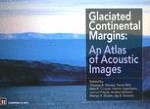1997 | OriginalPaper | Buchkapitel
Overview
verfasst von : Leonid Polyak
Erschienen in: Glaciated Continental Margins
Verlag: Springer Netherlands
Enthalten in: Professional Book Archive
Aktivieren Sie unsere intelligente Suche, um passende Fachinhalte oder Patente zu finden.
Wählen Sie Textabschnitte aus um mit Künstlicher Intelligenz passenden Patente zu finden. powered by
Markieren Sie Textabschnitte, um KI-gestützt weitere passende Inhalte zu finden. powered by
Ice scouring (plowing) of the sea floor is a common feature in marine areas affected by floating icebergs and/or sea ice [e.g. Reimnitz et al., 1978; Lewis et al., 1980; Barnes and Lien, 1988]. Icebergs, detached from a calving glacier terminus, may be dragged by winds or currents for long distances before finally melting out. On the way, deep protruding parts (keels) of icebergs may come into contact with the sea bed and significantly deform the sea-floor surface by plowing the soft sediment. At present, icebergs commonly touch bottom at depths down to 100 m off Svalbard, 200 m on the Greenland shelf, and over 300 m in the Sub-Antarctic. Occasional icebergs may reach deeper, due to an increase in draft through iceberg rolling. By contrast, sea ice, thickened by the formation of shear and pressure ridges, largely affects only shallower depths of less than 50 m [Barnes and Reimnitz, this volume]. During past glacial epochs, iceberg plowing was especially widespread, and affected wide areas of the North American and Eurasian continental margins [e.g. Josenhans et al., 1986; Solheim et al., 1988]. In some areas, almost the entire the sea floor has been reworked by modern and/or relict floating ice activity.
